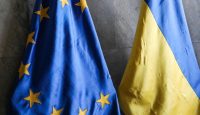
Orban’s Ukraine gamble is a blow to the EU’s geopolitical ambitions
The high-stakes EU summit in December 2023 resulted in accession negotiations for Ukraine and Moldova and candidate status for Georgia – thanks to a well-timed coffee break. As Hungary’s Victor Orban sought to derail the decision on Ukraine, he was invited by the leaders of the other 26 member states to take a coffee break. As Orban left the room, they got a consensus to open negotiations and he got the €10 billion that had been frozen over Hungary’s rule-of-law violations. He did however succeed in blocking €50 billion of aid to Ukraine – a lifeline for Ukraine’s war-torn economy.
There are three main takeaways from the summit.… Seguir leyendo »








